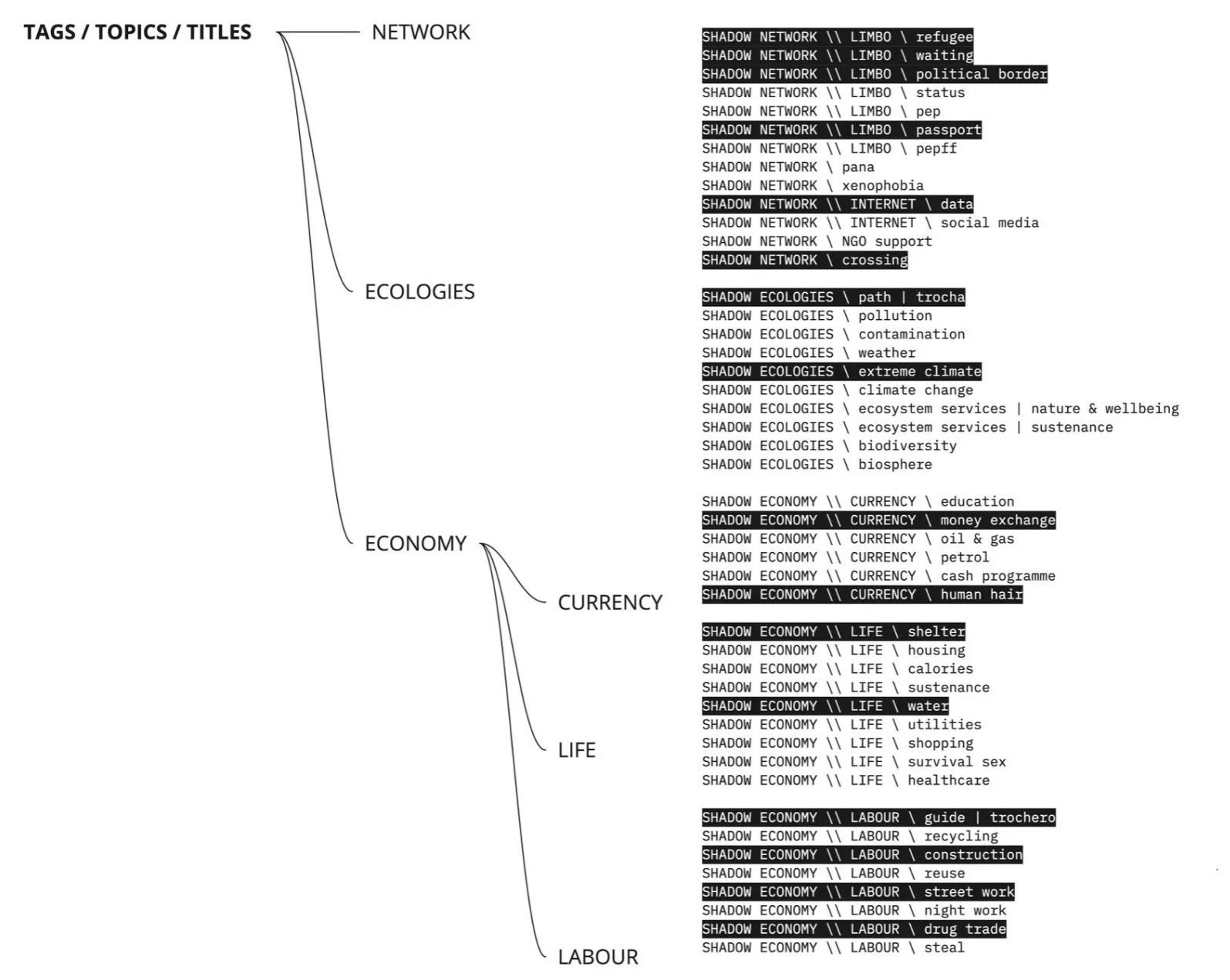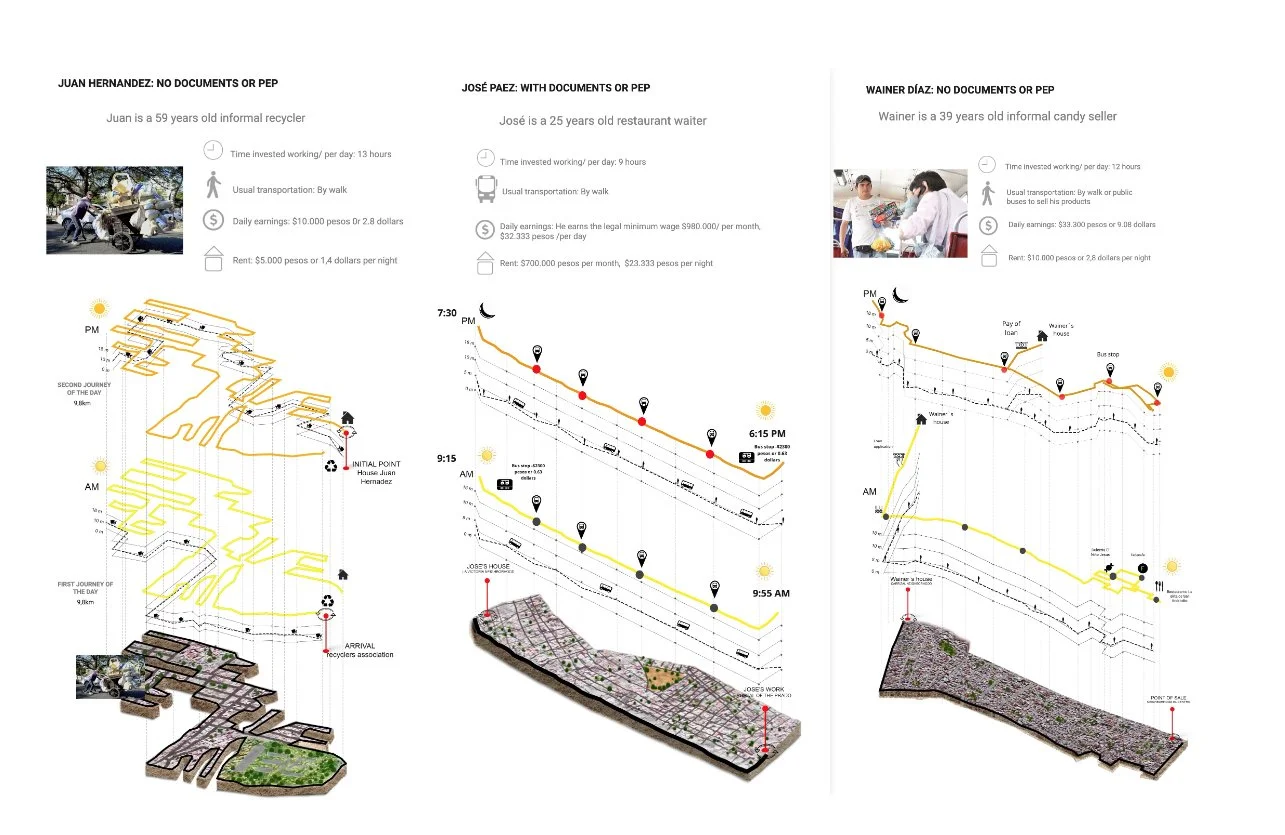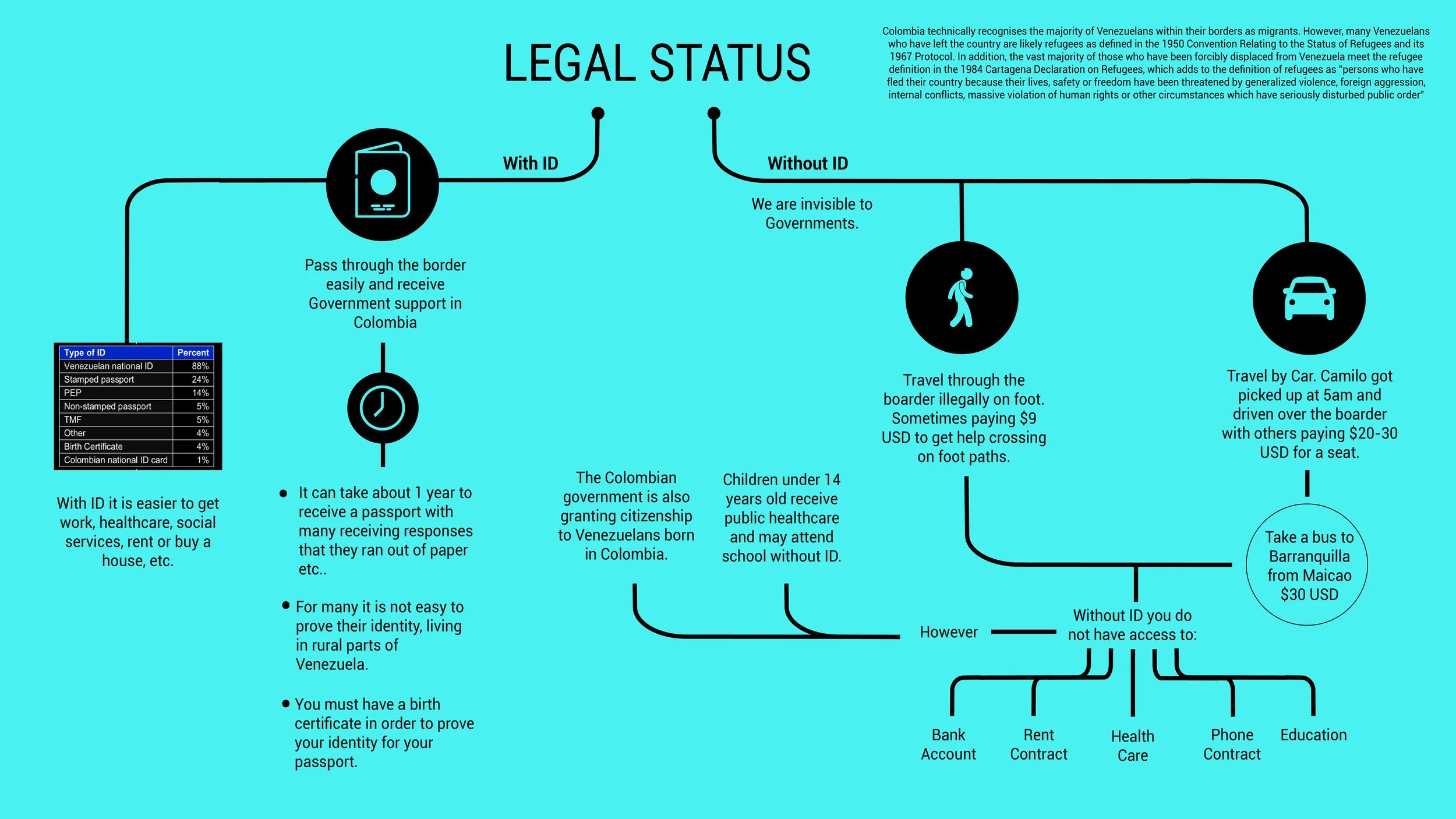As a key researcher in the "Sol y Sombra: Designing for Migration" project, my work has revealed the complex social and economic dynamics at the Colombia-Venezuela border. Drawing from my thesis research at Tyler School of Art, I implemented a novel social media analysis to understand the activities and experiences of migrants on Facebook (pdf below). This approach was crucial in mapping the diverse range of activities at the border, significantly contributing to our understanding and categorization of shadow networks and ecologies.
In addition to this digital analysis, on-site data gathered by Colombian students were integrated to create a comprehensive view of the border dynamics. Combining digital and physical data collection methods ensured a multi-dimensional understanding, then structured into a graph, aiding our team in effectively mapping the entire ecosystem.
My role in the project extended to synthesizing these insights into actionable solutions. Based on the understanding of how digital platforms foster entrepreneurship and social cohesion among the Venezuelan diaspora, I proposed the development of a hybrid digital-physical platform. This platform, tailored for the Venezuelan community, would serve as a digital marketplace and social network to support community interaction and economic activities. Complementing this digital interface, physical community centers in areas with high concentrations of Venezuelan migrants would serve as cultural and business development hubs. This integrated approach, informed by trust, community-driven initiatives, and creative problem-solving, addresses immediate needs, empowers civil society, and fosters resilience and sustainability in the face of migration challenges.
In summary, my contributions to the "Sol y Sombra: Designing for Migration" project have been instrumental in understanding the socio-economic dynamics at the border and shaping our strategies to create empathetic and practical solutions. By employing innovative research methods and proposing integrated solutions, I have contributed to a nuanced understanding of migrant needs, enhancing the project's ability to develop responsive and impactful interventions for those affected by migration.
"Sol y Sombra: Designing for Migration" is a research project led by Alejandro Haiek and Xenia Adjoubei, supported by Umea University, Sweden, and The Global Free Unit. In partnership with Universidad de la Costa and Santo Tomas University, Colombia, this initiative delves into the Venezuelan migration crisis in Colombia. It explores the multifaceted aspects of migration, including the frontier, the journey, and the arrival, examining the shadowy nuances of political upheaval, economic disarray, and the human cost of geographical displacement.
The project aims to develop systems, networks, and infrastructures that balance collective will and privileged power, transparency and opaqueness, formality, and the informal. It seeks to create solutions at various scales, from geopolitical to cultural, and down to small-scale architectural interventions, grounded in local resources, materials, and skills. By researching shadow policies, oblique geopolitical decisions, and parallel economic systems, the project aims to reveal new opportunities for empowering civil society in times of crisis.
The first phase of research generates spatial and environmental mappings, highlighting the intricate interplay between humans, politics, and nature in the context of migration. This innovative approach not only sheds light on the under-researched and underfunded aspects of the crisis but also aims to elevate the voices of those affected, offering alternative networks and legal frameworks for support. "Sol y Sombra" is a testament to the power of architecture and design in transforming challenges into opportunities, contributing significantly to our understanding and response to migration crises.




